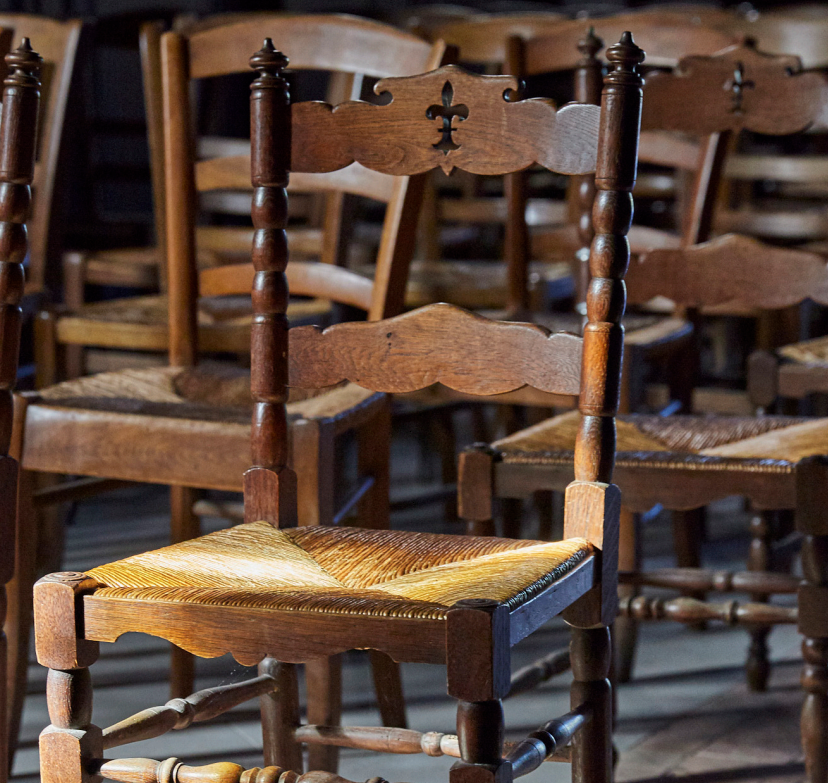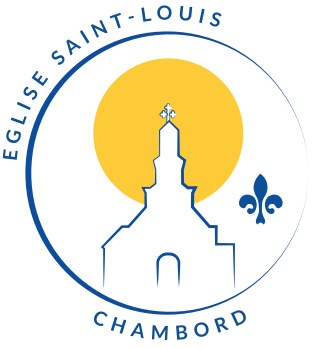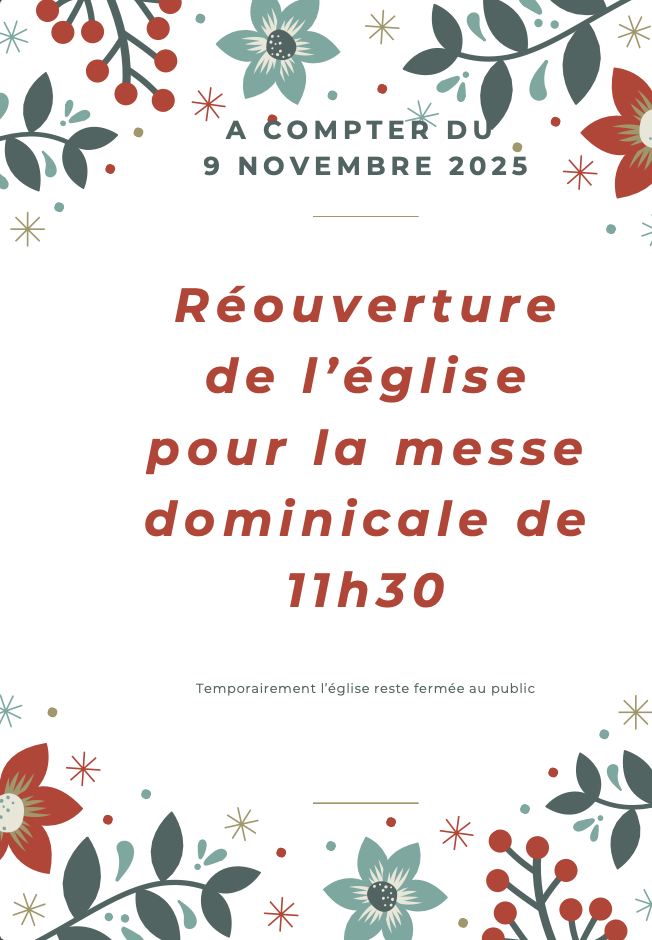The Royal Church of Saint Louis
de Chambord
Saint Louis Church is an integral part of the Chambord estate and as such belongs to the State,
like all other buildings within the estate. It is located in the municipality of Chambord.
History
In the 12th century, under the aegis of the Counts of Blois, a priory was founded here under the name of Notre Dame de Chambord.
In 1218 Thibault VI granted the priory heating rights.
The last Count of Blois, Louis XII, becomes King of France and the estate and the church then become royal property. The current castle does not yet exist.
Louis XII lacking a male heir, Francis of Angoulême becomes king taking the title of Francis I. Under his reign, the construction of the castle will begin.
It was in the 17th century that Louis XIV built the village. The territory of the municipality of Chambord corresponds to that of the parish. The church and its presbytery were restored in 1669 and the church is then named the “Royal Church of Saint Louis de Chambord”.
During the revolution, the church becomes a temple of reason. In 1793 the municipality abolishes the procession of August 15 and the feast of Saint Louis on August 25. The church is then renamed Notre Dame de Septembre.
In 1792 all silver is sent to the National Assembly and the Chambord church is dispossessed of its works of religious art.
In 1821 the estate is acquired by the commission that donated it to the Duke of Bordeaux who takes the title of Count of Chambord and who is considered the future king to reign under the name of Henry V.
In 1839, the Duchess of Berry ordered the restoration and reorganisation of the church for the Count of Chambord. From this time date the bell tower, the two side chapels and the cobblestones marked with H for Henry V.
The church and the presbytery, as the entire estate, will remain the property of the Maison des Bourbon-Parme until sequestration by decision of the court of Blois on April 22, 1915, then the purchase by the State in 1930. (expropriation date?).
During World War II, in 1944, the intervention and negotiation by the Canon GILG, the then parish priest of Chambord originally from Alsace, made it possible to avoid young people to be taken hostage and killed. He also saves both the castle and the village from destruction during the tragic week of August 21, 1944.
In 1976, the estate had the interior paintings and the painting of Saint Louis restored, behind the high altar. Two electric chandelier heaters are then installed.
The stained glass windows are redone thanks to the parish priest of that time, Father de Curzon.
The current church is rebuilt starting from 1830. The bell tower that was initially in the center of the edifice was demolished and rebuilt above the narthex in the classic style reminiscent of that of the castle with the same Bouré stone.
In the bell tower, a bell dating from 1776 is restored in 1971.
The front door, in solid oak, has sculptures representing Saint Peter and Saint Paul. It is covered with “H” letters for “Henri V”
Inside, above the portal, is a Doric pediment with three medallions representing the three theological virtues: Faith, Hope and Charity. The royal blue fleur-de-lys patterned vault is in the shape of a parabola. It is also covered with H letters for Henry V, grandson of King Charles X and son of the Duke of Berry and Caroline of Two Sicilies.
The high altar is surmounted by a painting by Alexandre Le Hénaff (1854) representing Saint Louis surrounded by the Count of Chambord in crusader attire.
At mid-height, surrounding the choir, frescos represent the twelve apostles.
The Virgin, to the left of the altar, was offered by the Count of Calonne.
On the right, in the chapel of the Virgin, is a polychrome statue from the 18th century. A banner on the French crest carries an H for Henri II and a D for Diane de Poitiers.
On the left, the chapel of the vow of Louis XIII. The altar and private oratory of the Count of Chambord. Above, a tapestry represents Louis XIII offering the crown of France to the Virgin Mary.
The king is surrounded by Saint Michael the Archangel and Saint Joan of Arc. The stained glass windows in the left chapel represent the French coat of arms and in the central alley Saint Clotilde (wife of King Clovis), Queen Blanche of Castile (mother of Louis IX or Saint Louis), Charlemagne, and Saint Henry.

Church furnishings and
treasures
At the entrance, a basin made of Pyrenees marble is used as a holy water stoup. It belonged to a fountain, now destroyed, that was located in the gardens of the castle.
The Renaissance-style baptismal fronts are made of white Carrara marble. The leg is adorned with foliage and twisted ribs.
In the choir, on the right, a glass display contains objects of worship offered by the Count of Chambord including chalices. One in gilded silver dates from 1881.
Another of Renaissance style in hammered and chiseled silver represents scenes of the Passion of Christ.
Above the window display, a painting by Hobi depicts King Saint Louis holding the crown of the Passion in front of Notre Dame de Paris and the Sainte Chapelle.
At the threshold of the choir, near the pulpit, a contemporary organ case replaces the former harmonium.

